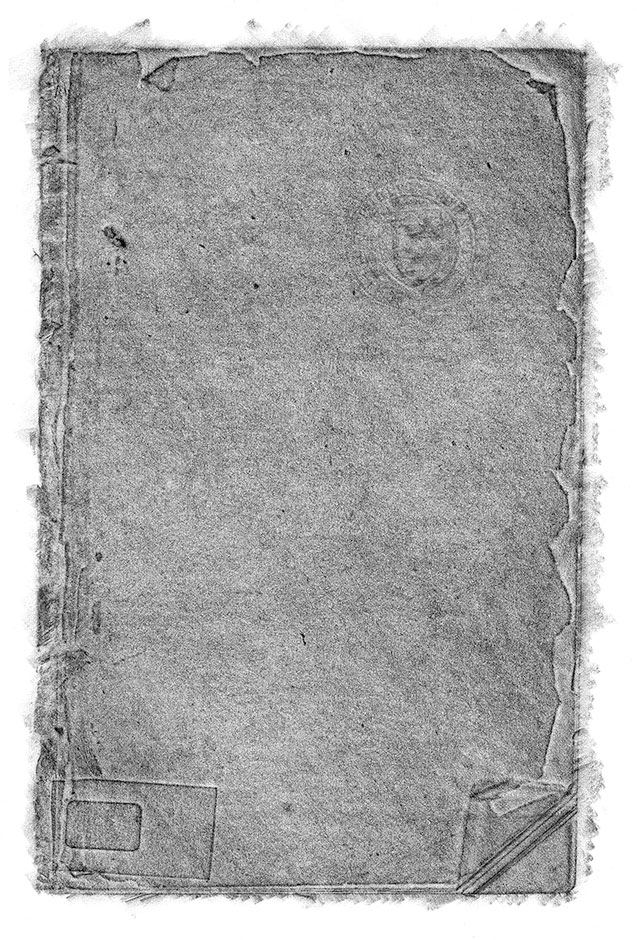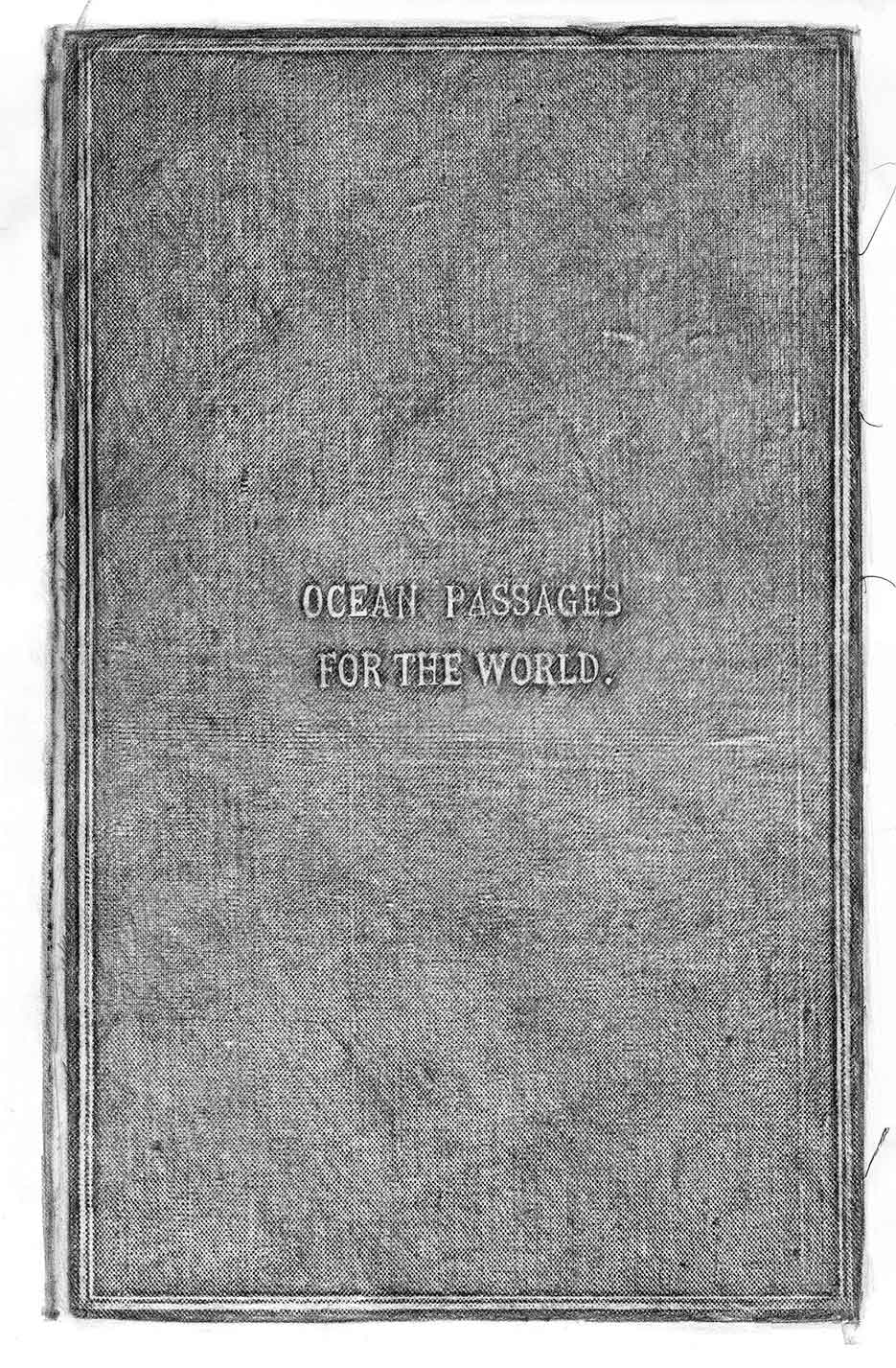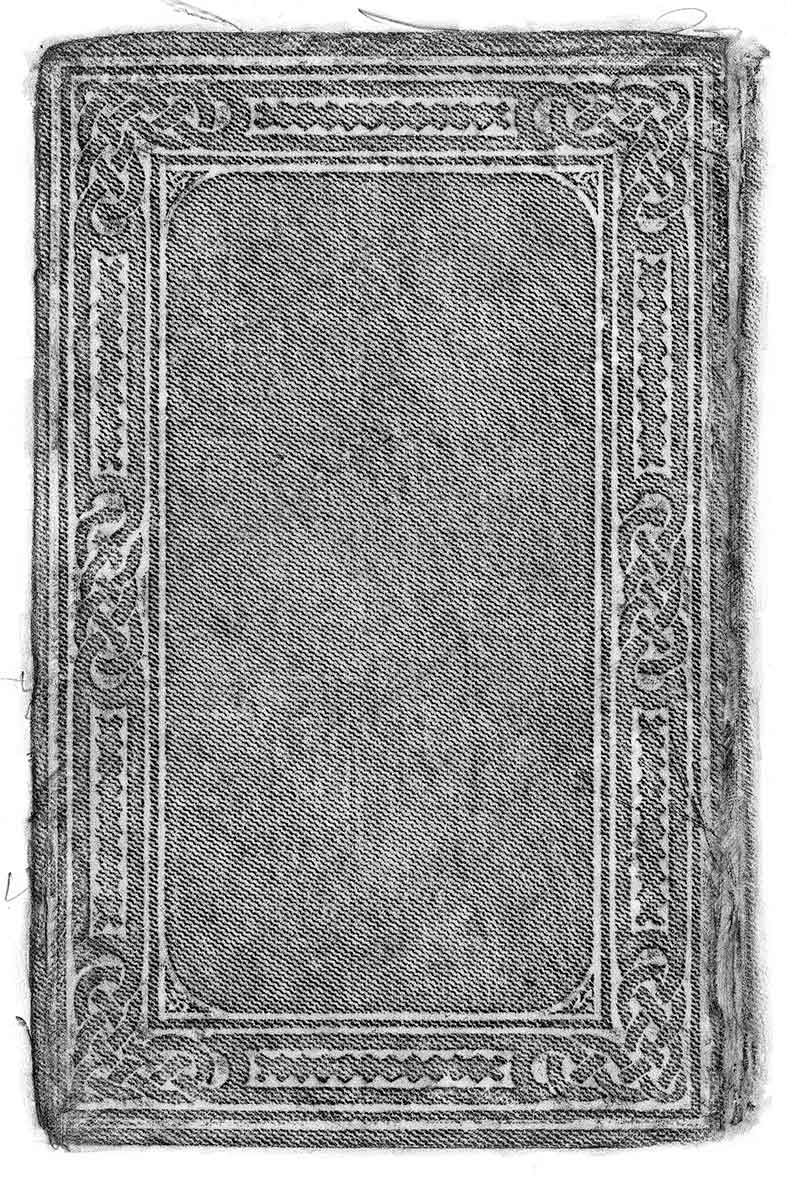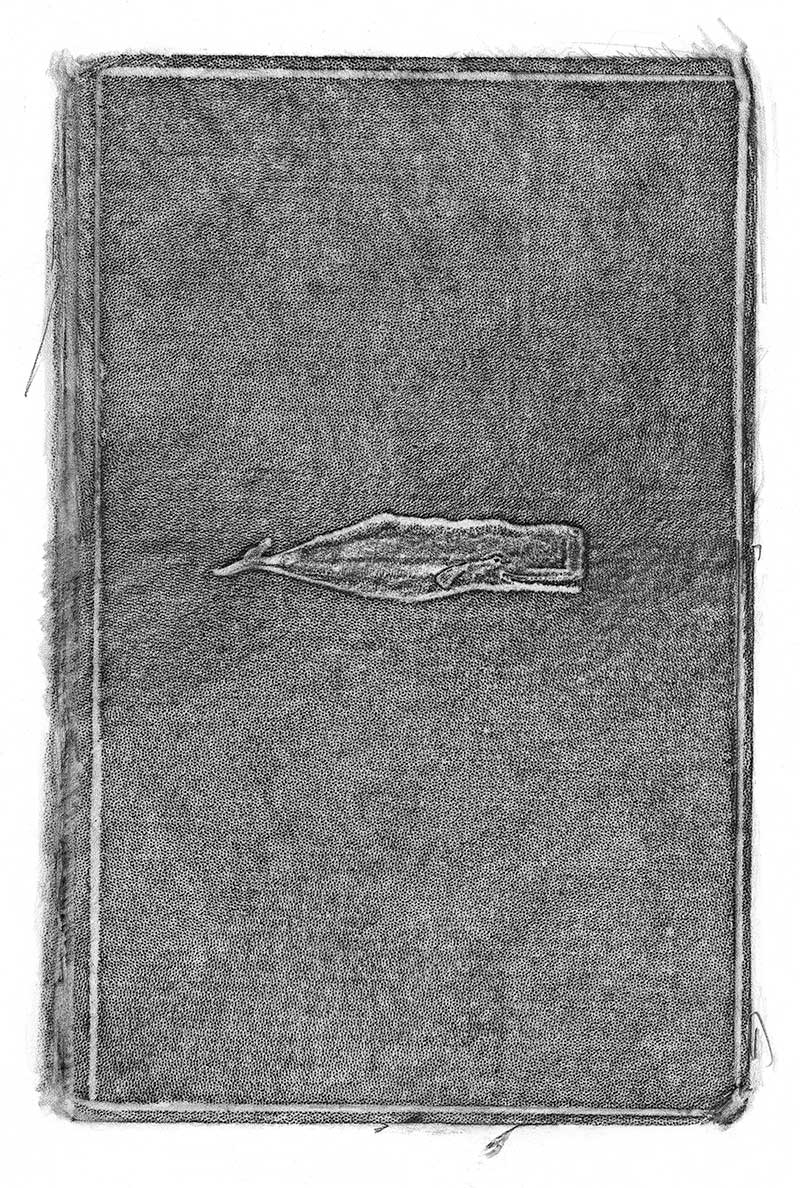Pencil rubbings, 2013
During my artistic residency at the University Hull I had access to the collections and archives of the Maritime Historical Studies Centre, the Maritime Museum and Hull History Centre. These collections and the very few visible remnants scattered across the city (what is left of the old docks, yards and factories) were my main window into the industry of over 200 years ago. I focused mainly, but not exclusively, on books concerned with the whaling period of the city, approximately 1776 to 1867.
I love old books, especially the ones that show their age, the decaying grandeur of their leather covers and gold embossing. Seduced by the elaborate covers I started taking pencil rubbings of the embossed titles and designs, an art technique also known as frottage. Progressively, my attention was drawn away from the figurative embossed designs on the books and towards the textured covers. They suddenly reminded me of the sea glimpsed from a plane window: a static sea, opaque, solid and impenetrable as mountains. The sea from the pages somehow had filtered out to the outer skin of the book.
Hull Whaling Relics is a small booklet from the collection at the HHC. In its pencil rubbing the signs of ageing, institutional stamps and cataloguing tags are the only features of an otherwise uniform surface. This particular work can act perhaps as a poignant reflection of the position of whaling heritage within Hull cultural landscape, obscured and hidden in archives and libraries as oppose to visible and celebrated alongside the fishing heritage.

Hull Whaling Relics, pencil on paper, 2013

Ocean Passages for the World, pencil on paper, 2013

The Geography of the Sea, pencil on paper, 2013

